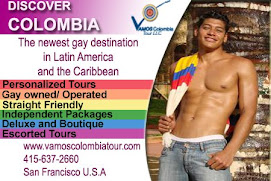
According to Colombia Reports,
Colombia saw two of its most important festivals added to the UNESCO list of intagible cultural heritages; Popayan's holy week and Pasto's black and white carnaval.
The two festivities are added to the 90 other officially recognized intagible culture heritages from around the world.
Already on the list were Barranquilla's world famous carnaval and the culture of San Basilio de Palenque, a town in the north of Colombia, famous for its afrocolombian music and dance.
UNESCO's own website describes the two events as follows:
 Pasto's Black and White Carnaval
Pasto's Black and White Carnaval:
Arising out of native Andean and Hispanic traditions, the Carnaval de negros y blancos (Black and White Carnival) in San Juan de Pasto in south-western Colombia is a great celebration lasting from 28 December to 6 January each year. The celebrations begin on the 28th with the Carnival of Water − the throwing of water in homes and on the streets to initiate a festive mood. On New Year’s Eve, the Old Year’s parade takes place, with marchers carrying satirical figures representing celebrities and current events, and culminating in a ritual burning of the passing year. The main days of the carnival are the last two, when people of all ethnicities don black cosmetics on the first day, then white talcum on the next to symbolize equality and integrate all citizens through a celebration of ethnic and cultural difference. The Black and White Carnival is a period of intense communion, when private homes become collective workshops for the display and transmission of carnival arts and a wide range of people come together to express their views of life. The festival is especially important as the expression of a mutual desire for a future of tolerance and respect.
 Popayan's Easter Week:
Popayan's Easter Week:The Holy Week processions in Popayán are one of the oldest traditions in Colombia, practised since the colonial period. From the Tuesday to the Saturday before Easter, between 8 p.m. and 11 p.m., a series of processions take place. The five processions, devoted to Mary, Jesus, the Cross, the Laying in the Tomb, and the Resurrection respectively, follow a two-kilometre route through the town centre. Each procession is set around reliquary floats, or
pasos, which are created and assembled according to complex rules. The reliquary floats are adorned with ornate, flower-decked wooden statues, most of which date from the late eighteenth century and depict the Easter story. The route is flanked on either side by worshippers carrying candles and wearing special clothing. The processions are remarkable for their artistic quality (gilding, cabinetwork), sounds and smells (incense). Preparations, which last for a whole year, follow instructions passed down to children from age five, and from generation to generation. The processions have their own vocabulary and expertise, and the roles and responsibilities of each individual are precisely allocated. Some inhabitants of the town, who have formed a general assembly to protect the tradition, act as the organizers and work with the authorities and various bodies. The processions, which attract many visitors from around the world, are a major factor contributing to social cohesion and the local collective psyche.












